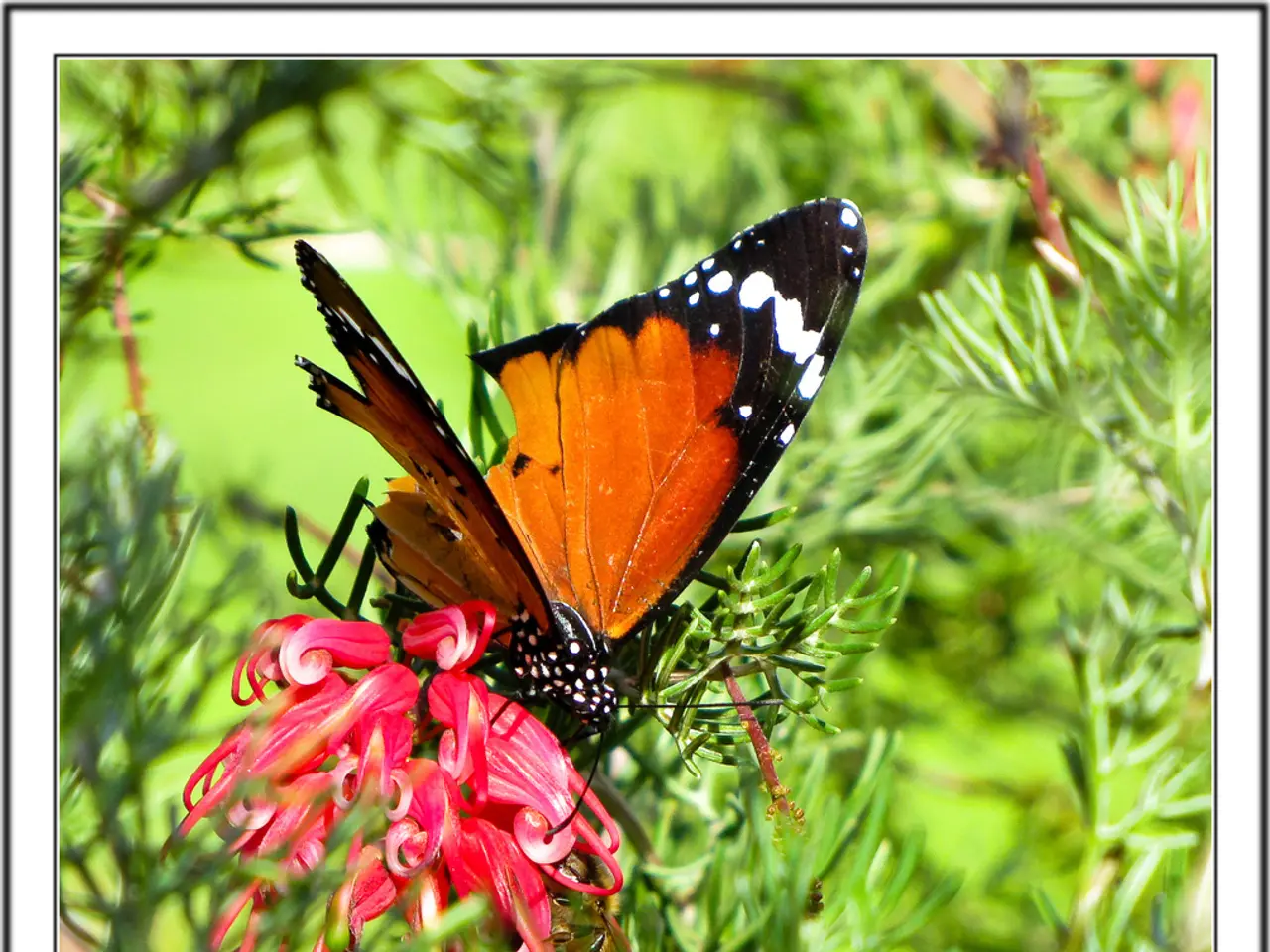Actions for Supporting Monarch Butterflies: Essential Steps for Assistance
In recent years, the population of monarch butterflies has been on a steady decline, and conservation efforts are more crucial than ever. The main threats to this iconic species include habitat loss, pesticides and herbicides, climate change, disease and parasites, illegal logging, and human disturbance.
Habitat Loss
Large-scale agricultural expansion, urban development, and pesticide use have drastically reduced milkweed availability in North America, the only plant monarch caterpillars eat. This loss critically impacts monarch reproduction. Similarly, deforestation and logging in the monarchs’ overwintering habitats, particularly in the oyamel fir forests of central Mexico, lead to habitat degradation.
Pesticides and Herbicides
Widespread use of herbicides like glyphosate in agriculture kills milkweed plants, while insecticides can directly harm monarchs at various life stages. To mitigate this, it's essential to avoid using pesticides on milkweed and nectar plants in gardens and conservation areas. Instead, an integrated pest management (IPM) approach should be adopted to reduce pest pressure.
Climate Change
Changes in temperature and weather patterns can disrupt migration timing, breeding, and overwintering survival. Extreme weather events (storms, droughts) also pose risks. As global warming continues, it's crucial to adapt conservation strategies to accommodate these changes.
Disease and Parasites
Infection by the protozoan parasite Ophryocystis elektroscirrha (OE) can weaken monarchs and reduce lifespan and reproduction.
Illegal Logging and Human Disturbance
Logging in Mexican overwintering sites and human tourism can disturb monarch populations during critical overwintering periods. It's essential to protect these habitats to ensure the survival of the species.
To help combat these threats, it's important to plant more milkweed and nectar plants, such as Liatris, Aster, and Goldenrod, which provide copious nectar to adult monarchs and other pollinators. A sequence of plants that bloom from midsummer to fall should be selected to provide ample nectar for breeding and migrating adult monarchs. These plants thrive in full sun and should be grouped together in clumps to attract butterflies.
However, it's worth noting that tropical (annual) milkweed species can harbour pests and may delay migration. Instead, focus on native milkweed species for a healthier, more sustainable garden.
For those interested in learning more about monarchs and gardening for them, resources such as Monarch Butterfly Journey North, Monarch Joint Venture, Pollinator Partnership, and Xerces Society for Invertebrate Conservation are excellent starting points.
Let's work together to protect and preserve the monarch butterfly population for future generations.
- To support conservation efforts for monarch butterflies and create a healthier environment, one can practice science-based lifestyle choices such as incorporating native milkweed and nectar plants in gardens, adopting an integrated pest management approach to reduce pest pressure, and learning about monarch butterfly biology from reliable sources like Monarch Butterfly Journey North, Monarch Joint Venture, Pollinator Partnership, and Xerces Society for Invertebrate Conservation.
- Adopting a life-enhancing approach to gardening can contribute to environmental science, especially in the management of pests, the conservation of butterflies, and the promotion of health-and-wellness for both humans and pollinators, thereby benefiting the overall lifestyle in the community.
- The significance of conservation in the face of habitat loss, climate change, disease, illegal logging, and human disturbance for iconic species like monarch butterflies highlights the interdependence of environmental-science, health-and-wellness, and lifestyle, underscoring the need for more conscious choices in our daily lives that prioritize the preservation of the environment and its inhabitants.




